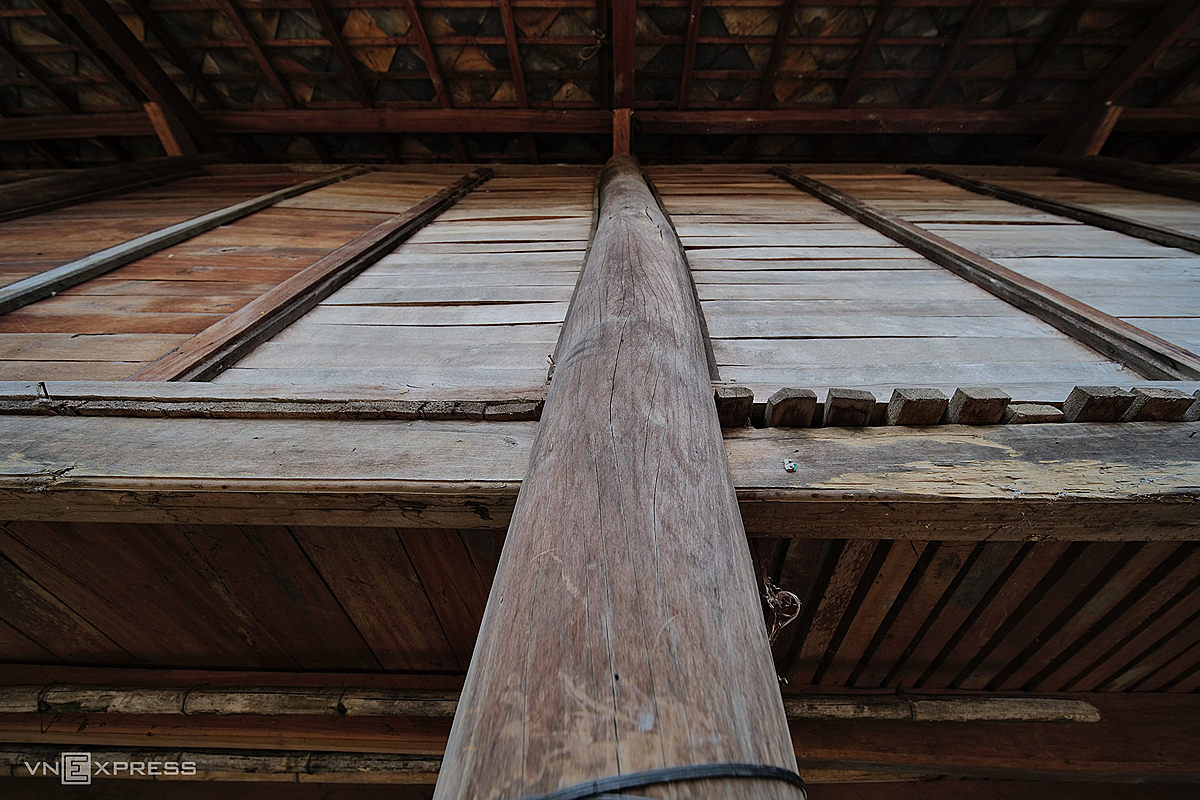Hundreds of stilt houses with roofs made of stone that line up along the Da River are a sight for sore eyes in Dien Bien Province’s Muong Lay town.
 |
|
Muong Lay is situated more than 100 kilometers from Dien Bien Phu Town at the confluence of the Da and Nam Na Rivers and Nam Lay Stream. It is distinguished by rows of stilted houses with stone roofs that are clustered at the foot of a mountain. It is home to nine ethnic groups, with the Thai accounting for 70 percent. |
 |
|
The town’s most notable feature is the stilt house with stone roof.Other provinces such as Son La, Thanh Hoa, Nghe An, and Lai Chau also have houses on stilts, but they typically have roofs made of thatch, tiles, cement, and other materials. |
 |
|
Owning a traditional house on stilts with a stone roof is a source of pride for the Thais here. Each house typically uses over 4,000 stones in black, brown and other hues. |
 |
|
The stone tiles must be squares of 20-30 centimeters, and aligned diagonally. |
 |
|
Tong Thi Que, 62, has the largest and most beautiful stilt house in Na Lay Ward measuring a total of nearly 300 square meters. |
 |
|
The stone roofs are stacked like fish scales, a nod to the Thai way of life associated with life along rivers. |
 |
|
The stone used for the roofing comes in a variety of colorslikeblack, brown, yellow, and others, with black being the hardest. |
 |
|
Traditional Thai stilt houses used to dedicated the ground floor to raise live stock and chickens. However, people stopped that practice and now keep the animals outside. |
 |
|
The columns are always made of large trees to support the stone roof, which weighs a ton. A strong and cohesive connection is created by using beams, trusses, columns, braces, and pedestals. |
 |
|
Living, cooking and weaving spaces are in the second floor, which is also the main part of the house. The floor is divided into three or five compartments depending on the family’s condition. The wall is made of wooden panels, and on the outside is a simple patterned railing. |
 |
|
The roads surrounding the houses are paved and have sidewalks and large trees for shade. |
- Reduce Hair Loss with PURA D’OR Gold Label Shampoo
- Castor Oil Has Made a “Huge” Difference With Hair and Brow Growth
- Excessive hair loss in men: Signs of illness that cannot be subjective
- Dịch Vụ SEO Website ở Los Angeles, CA: đưa trang web doanh nghiệp bạn lên top Google
- Nails Salon Sierra Madre
 VnExpress News The News Gateway of Vietnam
VnExpress News The News Gateway of Vietnam





